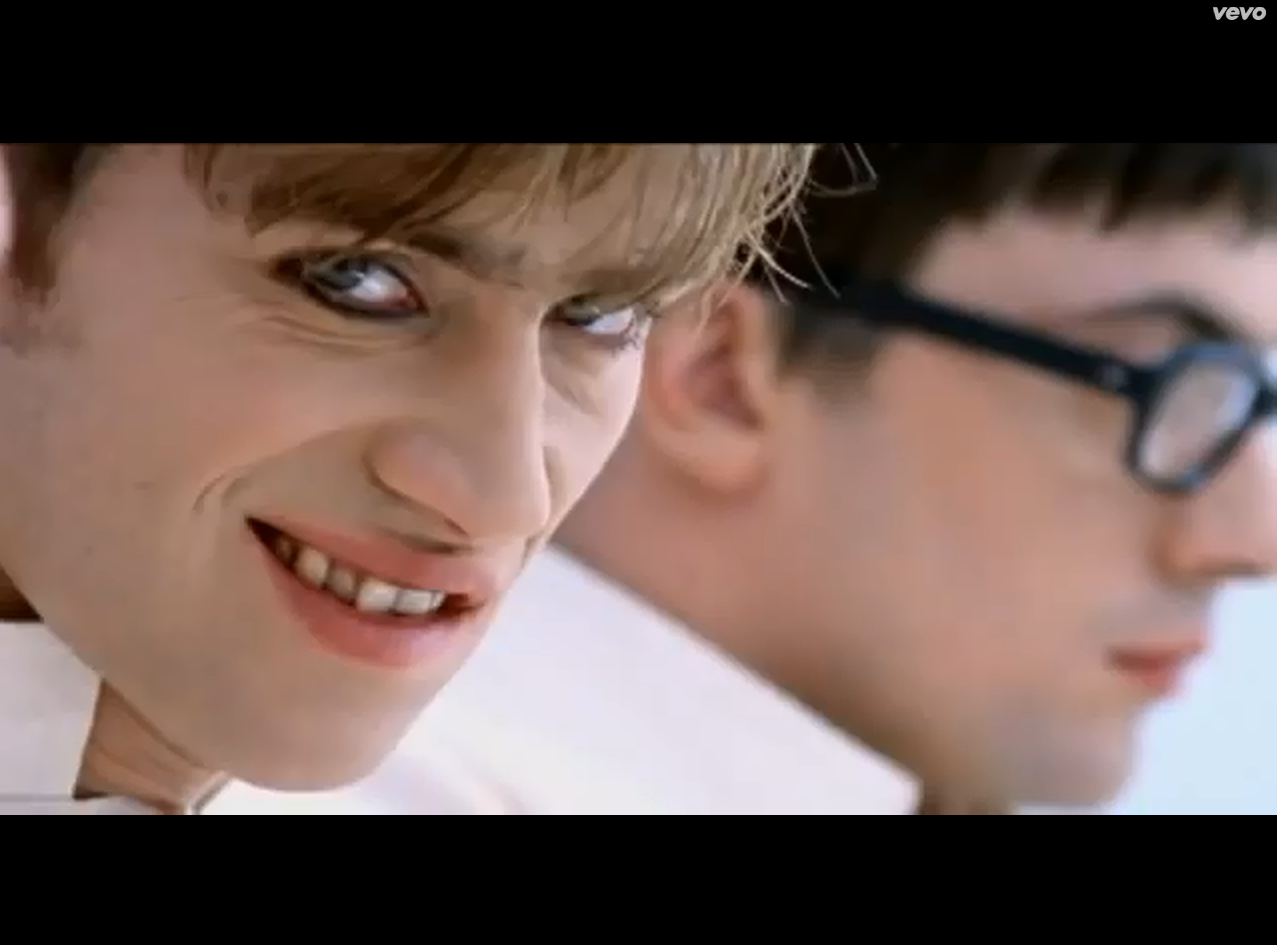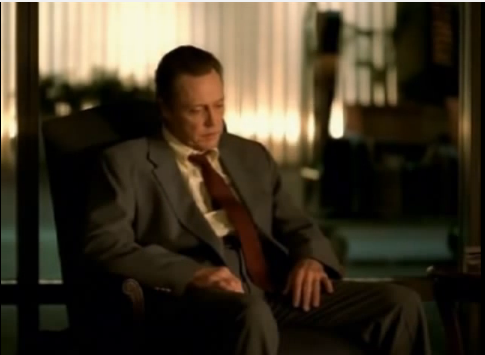John Stewart: Modern media incorporates, raids and reconstructs.
Julia Kristeva: Any text is the absorption and transformation of another
'The Universal' Blur
 This is one of the first shots from the video 'The Universal' by Blur. It begins as a close up on the face of Damon Albarn but gradually zooms out to see the rest of the band sitting on a white sofa. This shows intertextuality towards the Kubrick film 'A Clockwork Orange'. It is imitating a shot in which the main character- Alex- is sitting in a milk bar with his gang which are referred to as 'Droogs'. Because it is such a similar shot, fans of the film will recognise it immediately. Additionally, Albarn is wearing eye liner on one eye like this character does.
This is one of the first shots from the video 'The Universal' by Blur. It begins as a close up on the face of Damon Albarn but gradually zooms out to see the rest of the band sitting on a white sofa. This shows intertextuality towards the Kubrick film 'A Clockwork Orange'. It is imitating a shot in which the main character- Alex- is sitting in a milk bar with his gang which are referred to as 'Droogs'. Because it is such a similar shot, fans of the film will recognise it immediately. Additionally, Albarn is wearing eye liner on one eye like this character does. This is another way that tribute to this film can be recognised. There are a number of reasons why intertextuality is used in music promos or any form of media at all. It can be in homage to something else, a way of parodying it, it can appeal to more people, it can be appealing to find something familiar. In this video it could be said that the band are trying to appear as rebellious and unpredictable much like Alex and the droogs. It also shows the boldness that the band have in the way they stare the camera down and it almost feels like we are backing away from them.
This is another way that tribute to this film can be recognised. There are a number of reasons why intertextuality is used in music promos or any form of media at all. It can be in homage to something else, a way of parodying it, it can appeal to more people, it can be appealing to find something familiar. In this video it could be said that the band are trying to appear as rebellious and unpredictable much like Alex and the droogs. It also shows the boldness that the band have in the way they stare the camera down and it almost feels like we are backing away from them. This is another shot that would remind many people of the film. This is a shot that was used on Alex in the film and was also seen on the posters for the film. A reason for why this might have been used is because some viewers of promos might like the feeling of recognising a reference. People tend to like being able to say that they knew what something referred to. Also, it is likely that many fans of A Clockwork Orange heard about this promo and wanted to see it, meaning that Blur would have an increased fan base. Damon Albarn is also comparing himself directly to the character of Alex, which is quite unusual seeing as he is incredibly violent and twisted. He may be comparing himself to this as he relates to or wants to project the image of a misunderstood young man. Alternatively it may be to get people talking about the video and questioning whether or not it is a good video as it refers to quite a controversial film.
The costumes in the video are also reminiscent of the Kubrick film. Although they do not directly copy the film's costumes they are quite similar in that they are entirely white. This again puts the band at a parallel to the thuggish boys in the film. The intertextuality in the video could be a tribute to the film as well. Sometimes artists like to show similarities to other art to show their respect and to show the type of the art they would like to be affiliated with.
The setting for the video is essential in creating the similarity to A Clockwork Orange. In the film, the characters visit the 'Korova Milk Bar'. It is a very surreal location where they drink drugged milk and there are many sculptures of naked women. This features in the video as seen in this still when there are legs of dummies up on platforms.
Although this speaker does not seem to have such a direct link to the film it could be suggested that it relates to how important music is in A Clockwork Orange. The main character links music to violence and this prop could link to this theme and also fits in with the white leather style of the milk bar featured in the video.





























